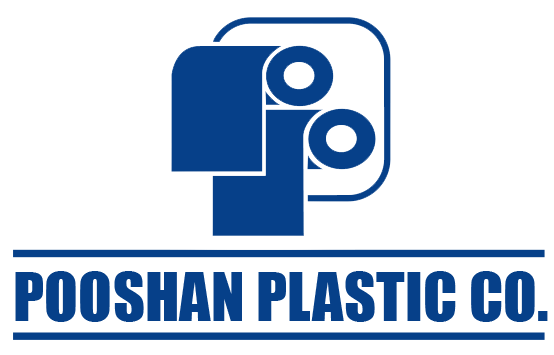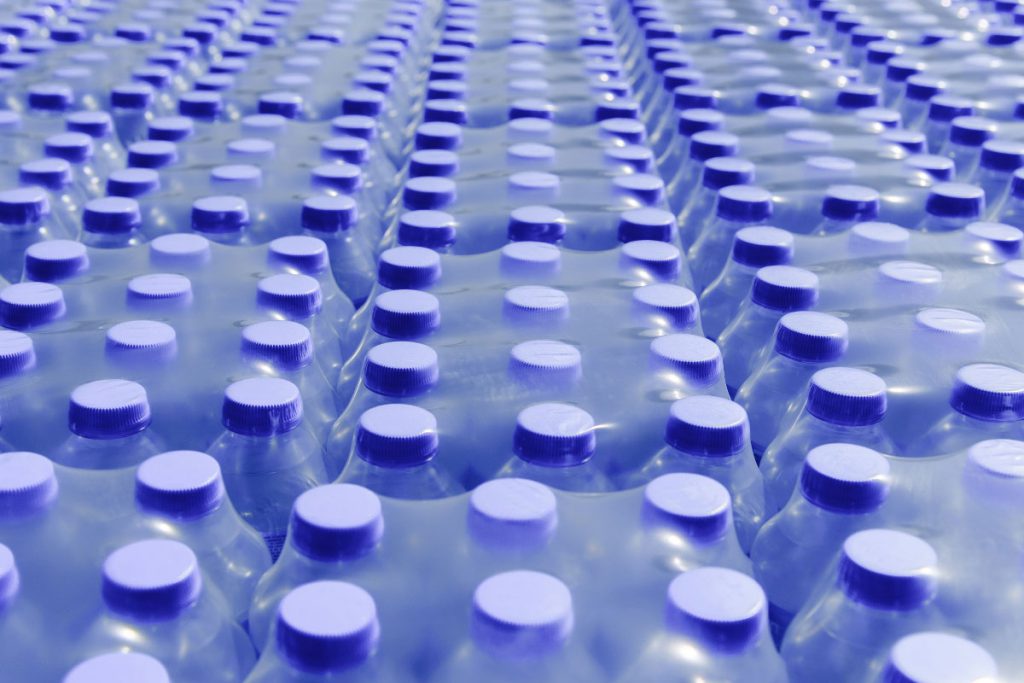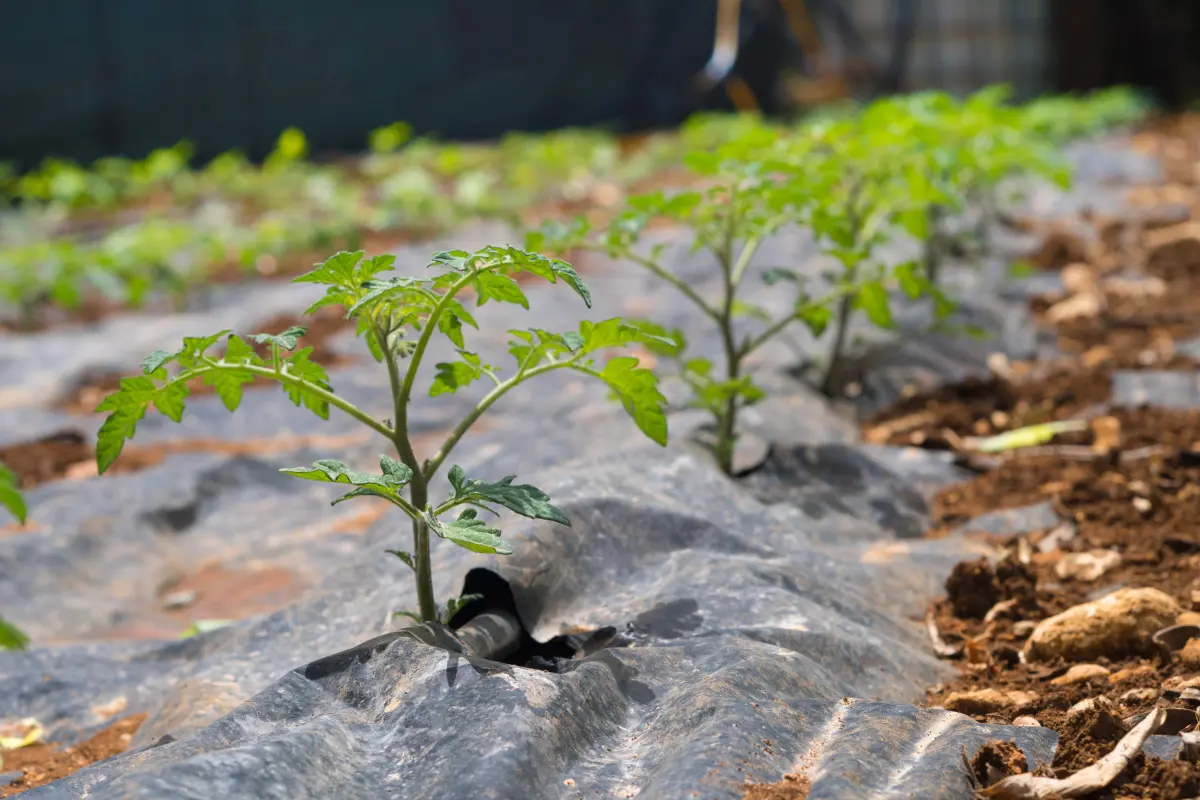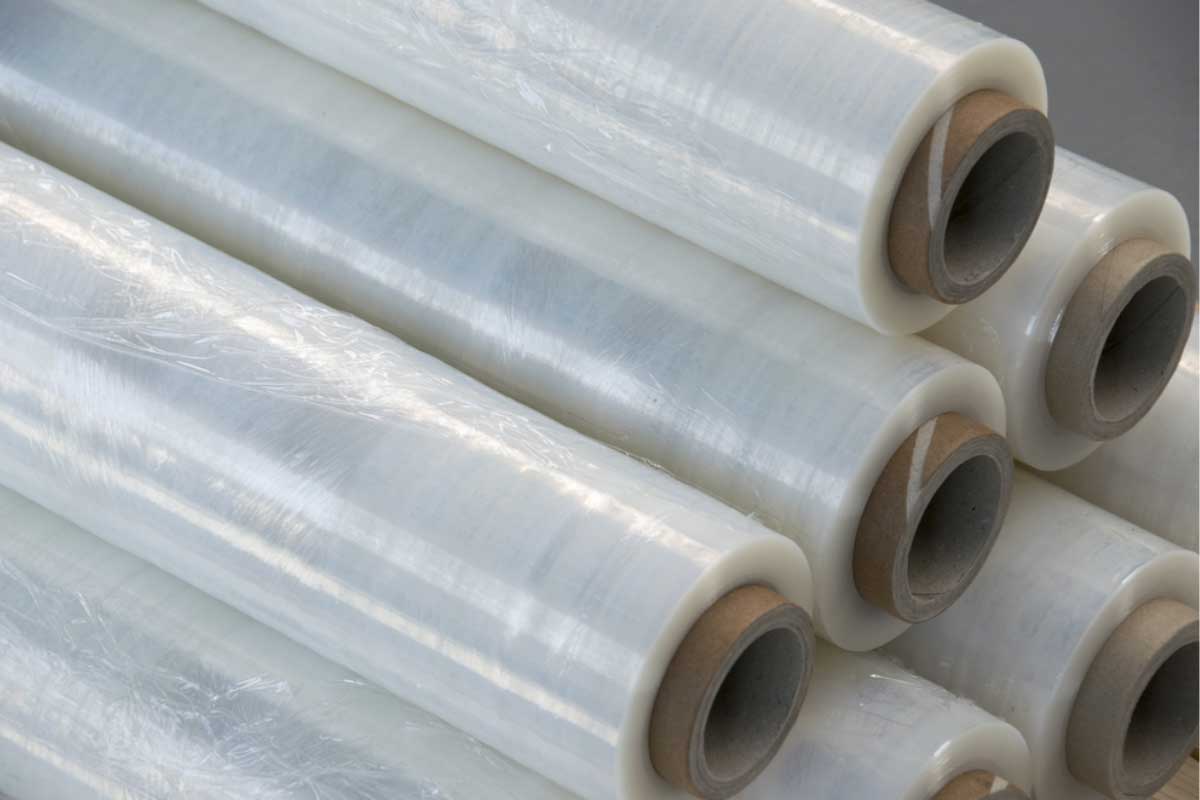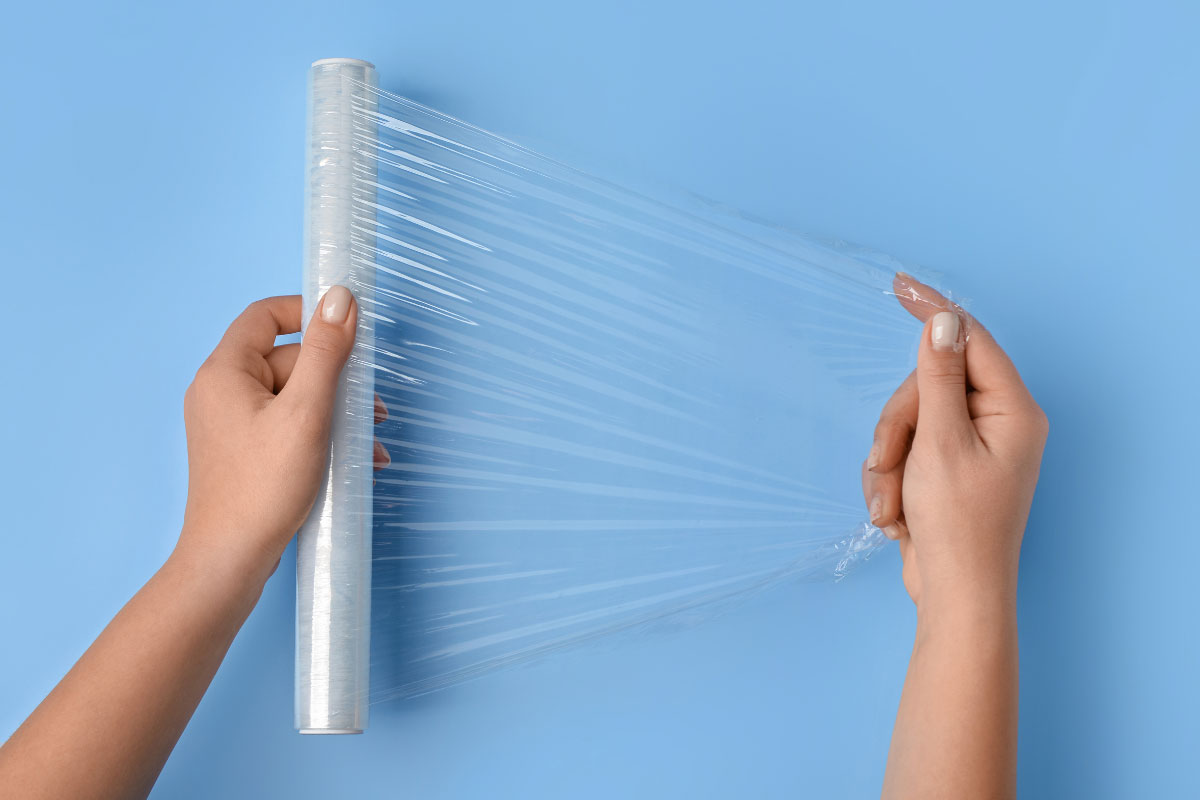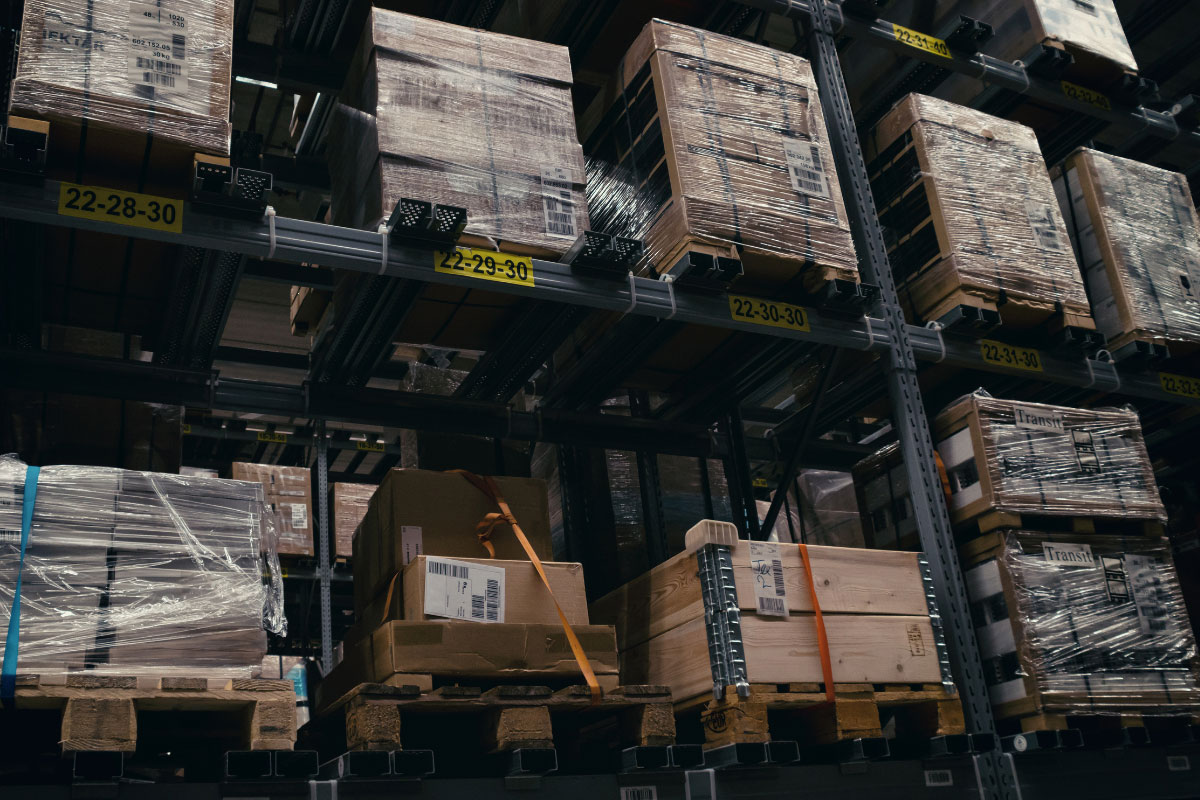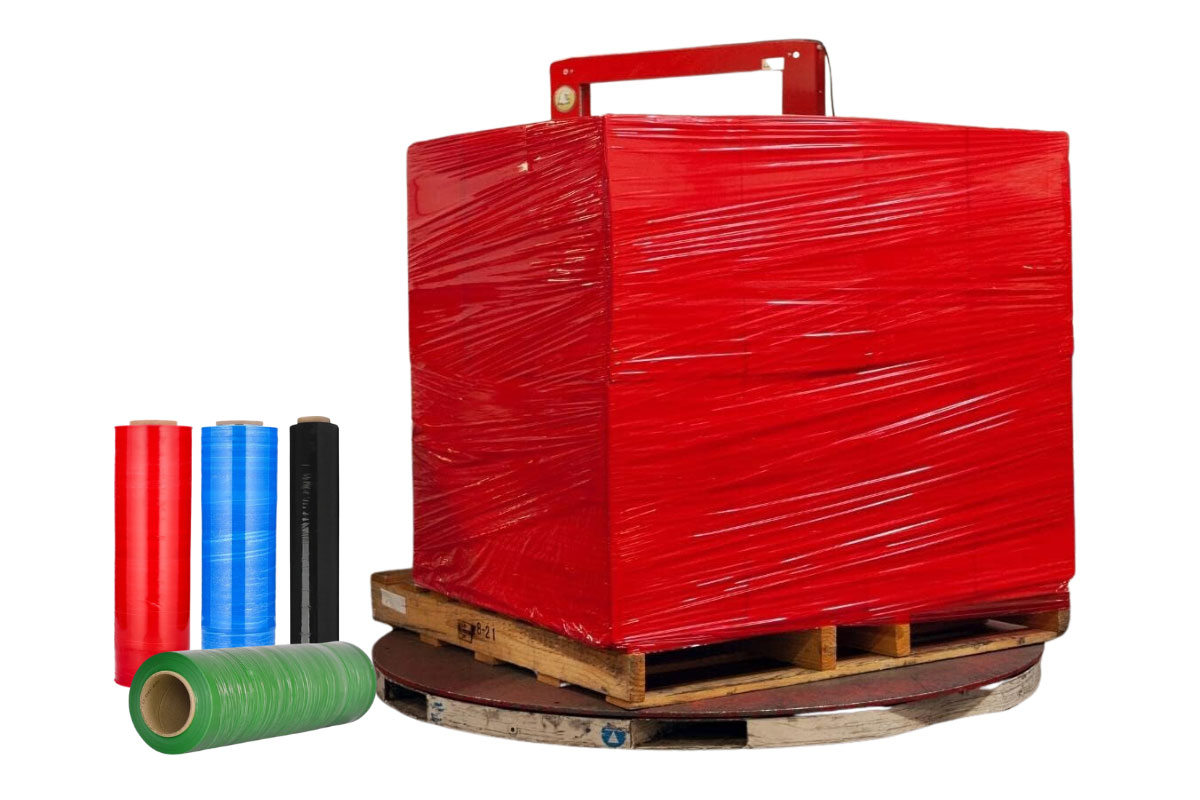What is shrink film? Shrink film is a packaging plastic, but why is it popular? The product that reaches the final consumer should have a great appearance to make them feel good and continue to buy. On the other hand, using suitable packaging will increase the lifespan and reduce costs in transportation and maintenance. One of the cheapest and easiest packing methods is nylon shrink wrap.
Shrink is a type of plastic packaging that is convenient to use. By using shrink roll and heat, you can organize the products. Due to its flexibility, remarkable durability, low price and other valuable advantages, many companies use it for packaging their products. Shrink film is a versatile polymer material that is used for final packaging. Heat is applied to the film by methods such as a heat tunnel, conveyor belt, electric or gas heat gun, and sometimes manually, etc., and the film tightens very quickly around the goods inside. This process creates a clear and durable barrier, protector and retainer around the products.
Until sufficient thermal energy is applied to the molecular chains and the film shrinks, shrink remains in its initial state. These films are available with different raw materials, thicknesses, transparency, strength and shrink ratios, which can help us implement special packaging and proper protection of the items. This diversity allows us to meet specific requirements regarding sealing, design, transparency, temperature, power and maintenance.
Features of shrink film
In the following, we will examine the seven features of these films that we should know before buying to make a suitable choice for different products.
1- Shrink force
This force (pressure) is usually measured in psi and is the force the film exerts on the product after shrinking. Understanding this force will be helpful if you are packing products that need to be tightly sealed and not damaged. Especially when adjusting the shrink machine, it is better to make the adjustment based on that.
In general, polyolefin films have more contraction force. Polyvinyl chloride (PVC) films have a low shrinkage force. However, newer polyolefin formulations offer a lower amount of shrinking force.
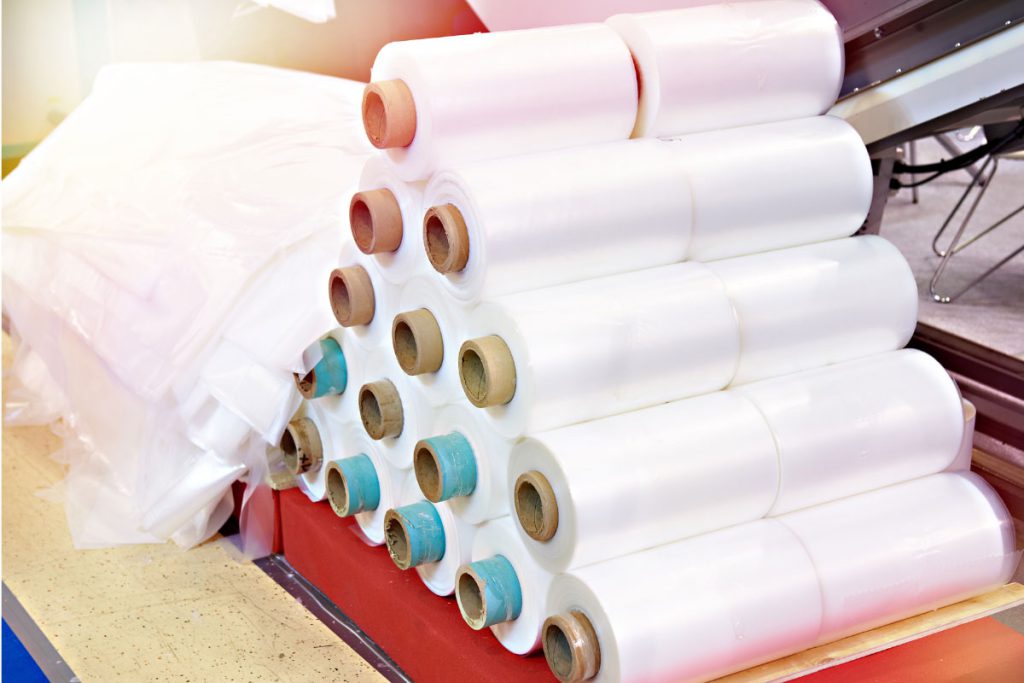
2- shrink orientation
This specialized feature describes the orientation of the film molecules after cooling. There are two types of shrink film direction: preferentially and bi-axially. The film is placed bi-axially in the machine’s and the product’s directions equally. But films with preferential orientation shrink preferentially in any order.
3- Free collapsibility
In addition to changing the roll percentage using the preferred orientation film, you can reduce the roll amount and stay with a bi-axial film. Another related feature is Free shrink. This feature refers to the ability of a film to shrink before contact with the product. The high level of Free shrink allows us to have a better-looking package in complicated shapes and sizes.
4- Resistance to tears
This property tells us how likely the film is to be punctured and how tear-resistant it is when it is stuck. Most films with high puncture resistance have lower tear resistance and vice versa. Deciding which of these two features is essential depends on the product type. Be sure to store the shrink in a cool environment before use to prevent it from weakening before use.
5- MVTR (moisture vapour transfer rate)
This characteristic measures how much moisture will pass through the film. This feature should be considered to improve the useful life. This feature is more important for food products.
6- Anti-Fog
Films with this feature are used in the fresh and frozen food packaging industry to reduce moisture in the film. Water can cause fog (steam) that affects the appearance of the product under the film. Films with this feature are created by adding other materials to the film structure during production.
7- Odor Barrier
Films with this feature are used to prevent unpleasant odours from entering or exiting the package. Especially for food or packaging of goods that are kept in environments with different smells and chemicals, the importance of this feature increases. For example, food and protein materials are practically unusable if the film hasn’t this feature.
Types of shrink plastic and their use
Three types of films are used for packaging, storage and transportation of products: polyvinyl chloride, polyolefin and polyethylene. Each of these materials has different capabilities and characteristics that make them suitable for specific applications. In addition, each can be simultaneously pressed into multiple layers with various additives to create distinct properties that increase durability or give a unique appearance.
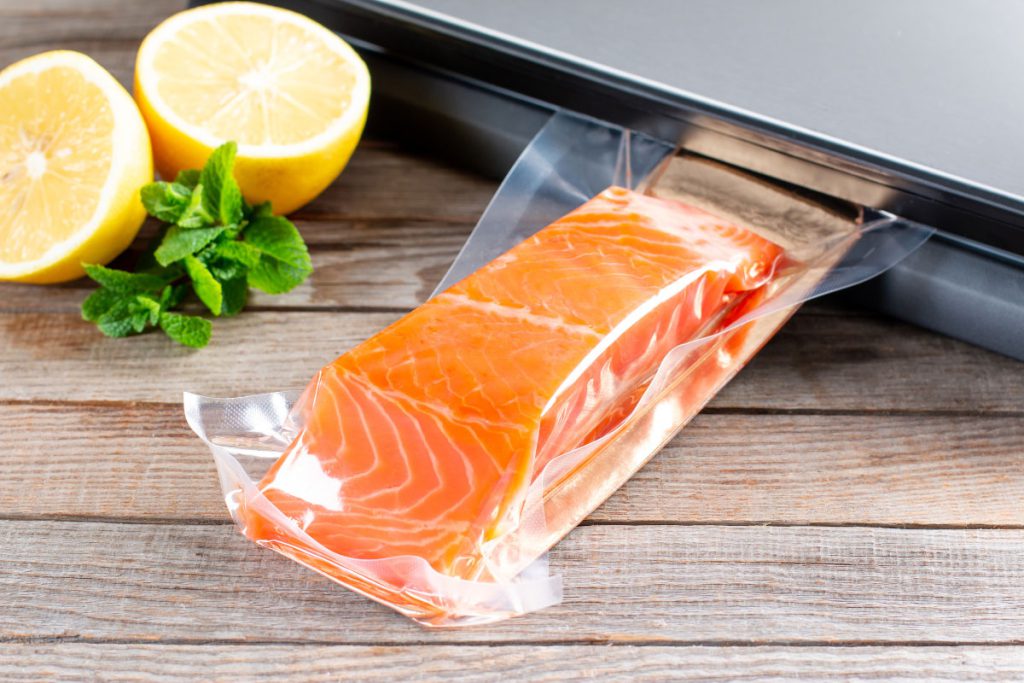
Polyvinyl chloride (PVC)
Due to its lightweight, low price and multi-purpose capability, PVC has been one of the world’s most common primary materials for shrink packaging. But it has given way to polyethylene (PE) and polyolefin (POF) for various reasons, including the health hazards of creating and burning, as well as its level of sustainability.
In its hard form, PVC is durable and used in construction projects and home appliance products. In packaging, PVC film is used for flexible applications (such as shrink film and bags).
PVC is used in the building and construction industry, as well as in the healthcare, electronics and automotive sectors. Tubing, blood bags, wire and cable insulation, car windshield system components, packaging, etc are commonly made with it. One of the common uses of PVC shrink film includes CD and DVD packaging, game and software boxes, and other non-food items.
Disadvantages of PVC shrink film
PVC is a combination of three elements: carbon, hydrogen and chlorine. Due to the harmful smell it emits when heated, its use is recommended only in well-ventilated facilities. It is banned in some countries due to the chemical compounds and toxic by-products created during its creation and decomposition. If you are going to use PVC shrink film, make sure that the process of using it is entirely safe.
Another problem with PVC is its reaction to hot and cold temperature changes, which makes it brittle at low temperatures and wrinkles at high temperatures. PVC’s resistance to tearing after a puncture is high, but its resistance to puncture is low.
Due to the fragile nature of PVC shrink film, it is unsuitable for packing several products. Of course, PVC exerts a little contraction force on the products inside. Another important thing about it is its low recyclability. PVC is a level 3 recycler and is not recyclable in most cases.
Polyolefin (POF)
Polyolefin shrink film is durable and practical and an excellent option for making all kinds of shrink film. It has replaced PVC in many applications and is a safe, FDA-approved way to package food. POF materials are available with different properties. One option is a cross-linked film, which provides high tensile strength and incredible transparency for high-speed packaging applications. Polyolefin reduces roll changes and increases efficiency and productivity. POF shrink film has good puncture resistance and sealing power, which helps protect irregularly shaped items throughout its supply chain life cycle.
Because of POF’s greater strength, longer rolls of film can be made with thinner gauges. Before continuing, it is necessary to be familiar with the concept of “Gauge”. A gauge is a unit of measurement equal to one-hundredth of a mile. For example, “70 gauge” refers to 70 hundredths of a mil or a thickness of 70 mil. “Gauge” can also refer to the general specification of a roll of film. POF is available in thicknesses less than 35-gauge (0.35 mil) and typically in 45, 60, 75 and 100 (1 mil) gauges.
Advantages of polyolefin shrink film
The malleability and affordability that POF offers in packaging devices and forms make it a viable option for manufacturers of protective packaging of all sizes. In some cases, POF film needs to have small holes or seams added before application. These holes allow air to escape during the shrinking process, producing a flat pack with a shrinking surface and no air bubbles. This is why pre-punched shrink film is now available from many suppliers.
POF produce from 100% recyclable materials. With its superior transparency and glossy appearance, polyolefin shrink film is best for consumer products where the interior display is critical. It also works well for packing multiple items, such as tissue boxes. POF is durable and less affected by temperature changes. It has excellent tensile strength and the ability to be assembled quickly and completely, and as soon as it leaves the shrink tunnel, it brings the final product that is ready to be shipped and stored. Typical applications of POF film include toy packaging, candy wrappers, books, food wraps, most retail items, and any consumer product where appearance is essential.
Polyethene (PE)
Polyethene is a type of polyolefin, which means one, and as a result, it is a single monomer film formed by adding ethylene during polymerization. PE is a raw material for manufacturing flexible packaging, including shrink film and stretch film, for which it exhibits different properties. The three most common forms of polyethylene include high-density, low-density, and linear low-density polyethene.
low-density polyethylene (LDPE)
This type of polyethene is less dense and has less mass than its volume. LDPE is highly resistant to impact, moisture and chemicals. It is also recyclable. LDPE is commonly used in applications where heat sealing is essential and in manufacturing flexible lids and packing.
Linear Low-Density Polyethylene (LLDPE)
This film is one of the most widely used films in the packaging industry. Among all types of polyethylene film, LLDPE is the most flexible. A linear form of low-density polyethylene, LLDPE offers greater strength and flexibility and provides excellent stretch. Although it doesn’t shrink as well as the previous ones, it’s great for wrapping stretch pallets and protecting heavy loads during shipping. LLDPE and LDPE films are commonly used for pallet packaging, snacks, frozen foods and pouches.
The advantages of low-density polyethene over other shrink-film packaging include greater strength and durability for heavier and more oversized items (such as beverage boxes). These videos are also printable. While POF and PVC are limited in gauge thickness (typically around 100 gauge), greater thicknesses (higher gauges) are possible with PE up to 1200 gauge (12 mils). These thicknesses are used in marine industry applications. The disadvantages of polyethene for sheeting are the shrinkage rate (usually around 20%) and less transparency.
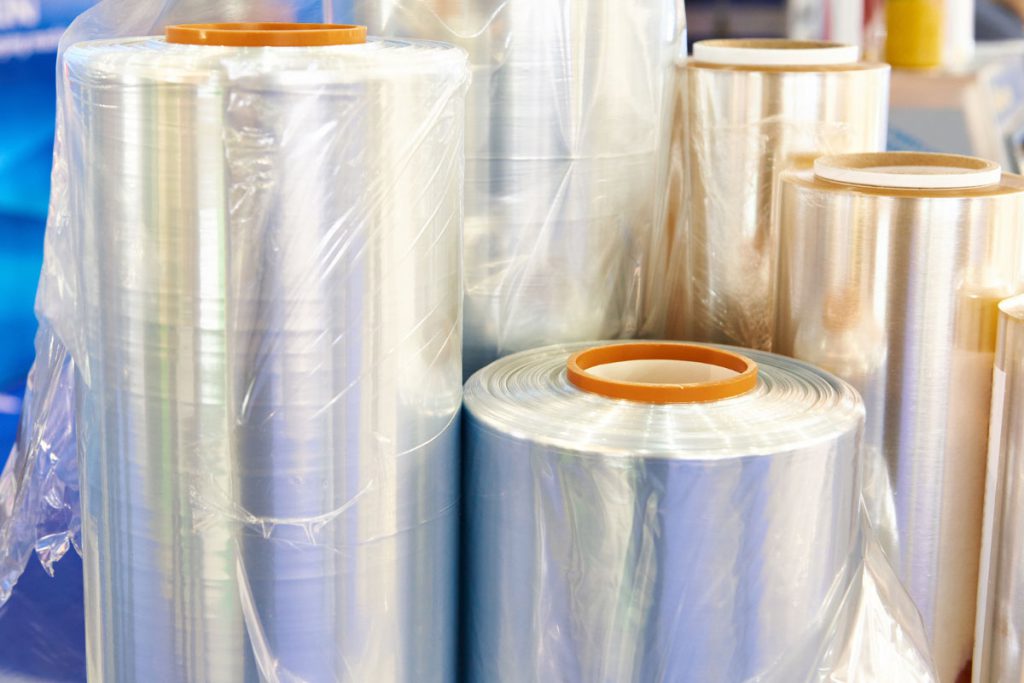
Comparison of shrink and stretch film
Shrink and stretch films are often confused because they are very similar, and, as mentioned above, both can be made from polyethylene. However, each has a different function. Film sheeting is gently placed on one or more items, and applying heat gathers around them, creating a strong and durable protective layer.
Polyethene stretch film is formulated differently to be stretched around goods. The elasticity of the film, combined with its adhesive ability, makes a strong protective layer around the items. Stretch film is commonly used for palletizing or consolidating multiple items on a pallet to prevent them from shifting during shipping. Stretch film is typically stretched to about 100-300%, while shrink film is roughly stretched to about 50-75%.
What is the advantage of shrink film?
1- Increased protection
The shelf life of shrink film allows us to protect and preserve the contents of the package. Cross-linked films are more resistant to tearing and punctures for goods with sharp edges, thus reducing the possibility of damage to the package during transportation. Nylon shrink is also great for reducing product manipulation. It helps to minimize product damage and waste in a vast production line. In addition, shrink film helps to increase the shelf life of perishable products and can preserve the smell of the contents inside the package.
2- Improve the appearance
Polyolefin coils can be produced as customized. Adding ingredients to its formula can be used to package any compact product. These films are transparent and bright, and as a result, they cause visual appeal in the supply of products; they are printable; Therefore, the Packing design improves, and the manufacturer can add special effects can be added.
3- Ability to recycle
One of the most significant advantages of POF and PE films is that they are recyclable. As a result, they do not harm the environment and are entirely green. In addition, unlike PVC, POF shrink film does not release harmful fumes during heat-sealing.
4- Cost reduction
Many brands have eliminated cardboard packaging by taking advantage of the strength and durability of nylon shrink. Heavy products can be safely packed without the need for cartons. Considering that the layer of shrink is thin, as a result, the space required for storage will be reduced, and more goods can be stored in the warehouse. On the other hand, nylon shrink is cheap, so the final production costs will also be reduced. Packing with them is also very easy, and labour is less tiring.
Pooshan Plastic shrink film can be ordered with a thickness of 35 to 150 microns and a final width of 2500 mm. Another advantage of our films is the ability to print; of course, you can also order the film in colourful and transparent.
